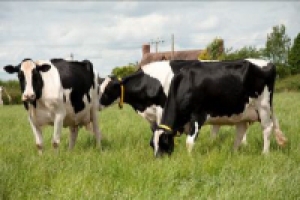Consultant

“The housing period provides an ideal opportunity to treat and remove a number of parasites, but parasite control is just as important once animals are at grass,” says Merial Veterinary Adviser Fiona MacGillivray.
Merial’s research has shown that 93 per cent of milking herds in the UK are facing a high level of gutworm challenge. This information is based on the results of bulk milk tank tests – ‘MOO’ Tests – conducted in the UK during 2008-2010.

Ms MacGillivray says: “Many dairy farmers don’t believe that gutworms are a problem in their adult cattle, as they cause no obvious clinical effects. However, there is an abundance of independent research conducted on more than 8,000 dairy cows which clearly shows that worming cows with eprinomectin to remove the gutworm burden, improved their milk production. Some trials have also shown an improvement in fertility, with reduced calving-to-conception interval and increased conception at first service.”
Research shows that treatment with eprinomectin can improve milk productivity by as much as two litres per cow per day. It also shows that treated cows eat more.
Maintaining feed intake in newly calved cows is essential. If food intake is compromised at this critical time, the negative energy gap increases. If a cow continues to milk off her back for a prolonged period, both her milk production and her fertility can be significantly compromised.
Ms MacGillivray highlights the need to be aware of the statutory withhold periods on wormers. She says: “For all animal medicines, farmers and advisers should be knowledgeable about the withhold periods and ensure that they are followed. They form a crucial part of the licence awarded to the product and producers have a legal obligation to ensure that they are adhered to. Eprinex® is the only wormer with a zero milk withhold for lactating dairy cows.”

Beef farmers may wish to tie in worming with the treatment of liver fluke. Treating for fluke after turn out can help to break the life-cycle of the liver fluke parasite.
The most recent parasite forecast issued by NADIS (National Animal Disease Information Service) has highlighted the need to watch out for chronic fluke in cattle. It points out that animals that were not treated with a flukicide soon or after the housing period should be treated now if they were grazing infested pastures last year.
Ms MacGillivray goes further than this and says: “In addition to giving a treatment now to animals that were not treated at housing, it is also worthwhile considering treatment for all beef cattle grazing infested pastures between 8 and 10 weeks after turnout.”
She continues: “A fluke treatment at grass will help to reduce fluke eggs shed onto the pasture in the spring and summer, thus reducing the subsequent risk of winter disease in cattle. An ‘at grass’ treatment may also contribute to improved growth rates and enable farmers to maximise their animals’ growth from grass – which is their most cost-effective form of feed.”
In fact, cattle treated against fluke at grass were shown to have 31 per cent better weight gain compared to untreated animals, and eight per cent compared to cattle that were only wormed.
With regards to timing, cattle can start to pick up fluke infection as soon as they are turned out to grass. It takes approximately 10 to 12 weeks for fluke to develop into adults, that produce eggs and the aim of treatment is to minimise fluke eggs reaching the pasture. From a practical management perspective and to tie in with a planned strategic worming dose, the general advice would be to treat with a flukicide 8 to 10 weeks after turnout or exposure to infection.
In terms of treatments farmers can use a combination endectocide such as Ivomec® Super, which will not only kill fluke but also provides persistent protection against worms at grass.























